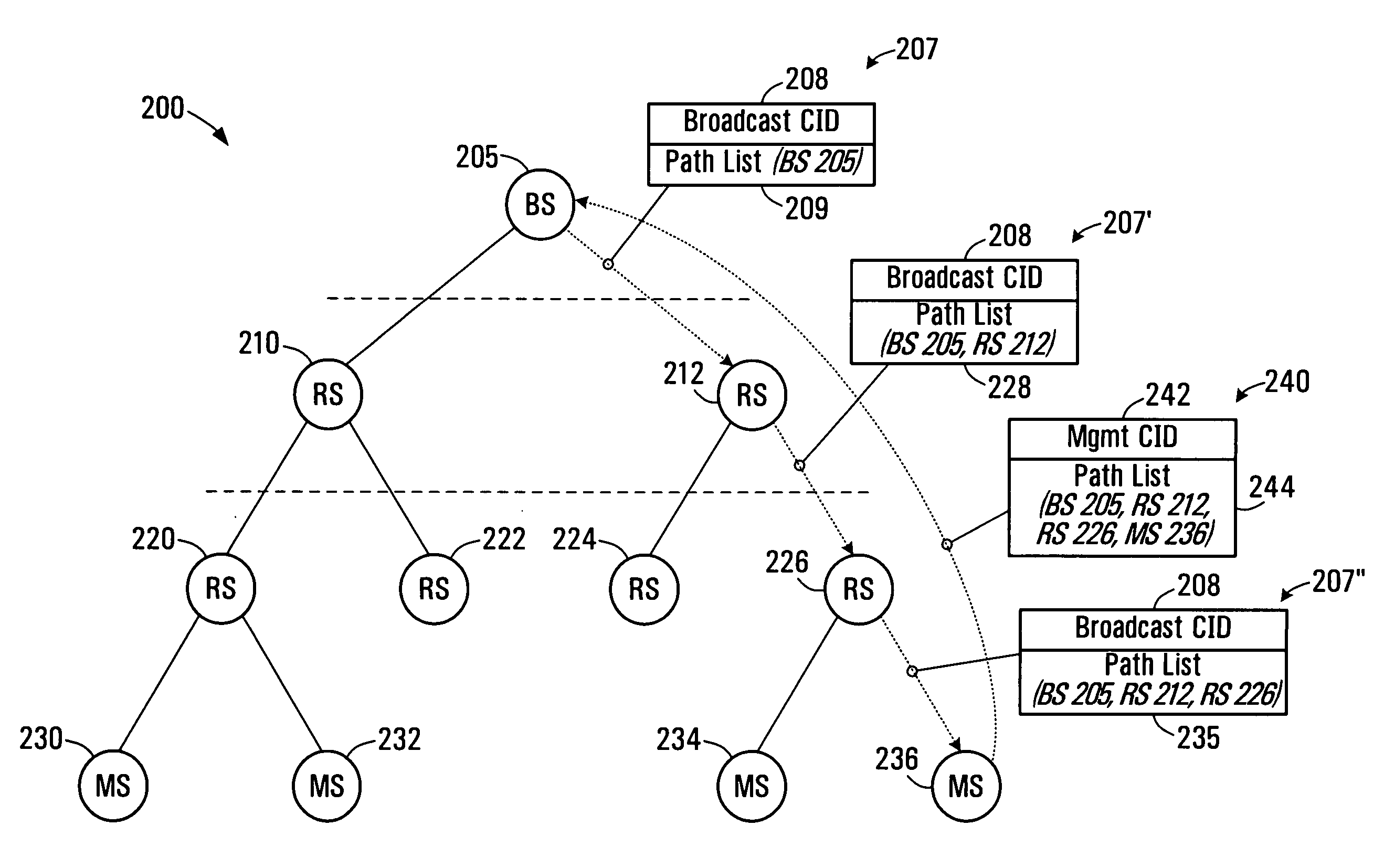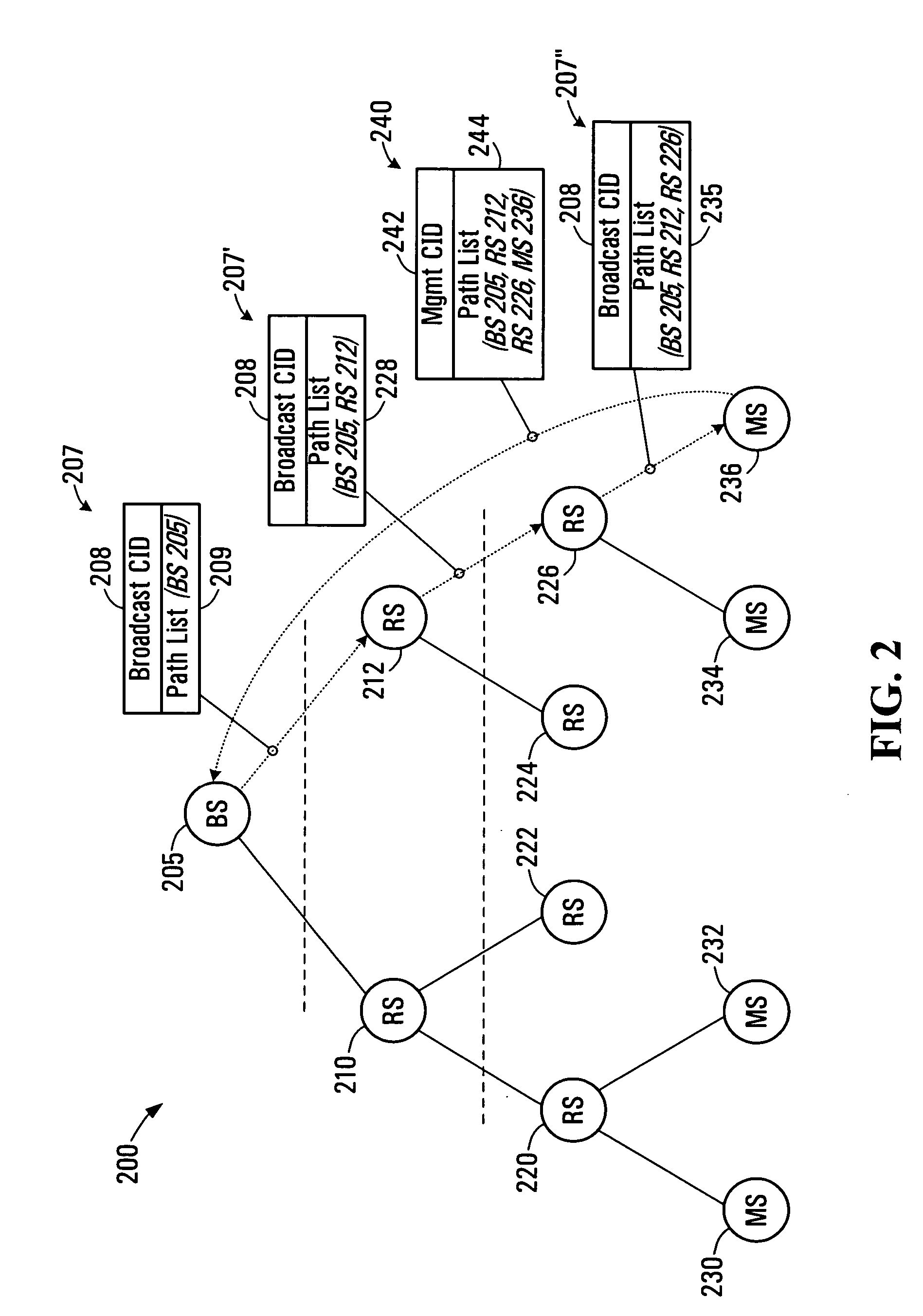Methods and systems for a wireless routing architecture and protocol
a wireless signal and routing technology, applied in the field of routing for wireless signal transmission, can solve the problems of mesh mode, incompatibility with pmp mode, and introduction of complexity to network control and resource scheduling
- Summary
- Abstract
- Description
- Claims
- Application Information
AI Technical Summary
Benefits of technology
Problems solved by technology
Method used
Image
Examples
Embodiment Construction
[0040] In some embodiments of the present invention there are provided protocols for use with a multi-hop network architecture. In some embodiments the multi-hop network architecture is a tree architecture. In some embodiments the multi-hop network architecture is a mesh architecture.
[0041] In the multi-hop architecture, a relay station (RS) is utilized between a base station (BS) and a mobile station (MS). Therefore, multiple hops occur between the BS and MS. Multiple RS may be located between the BS and the MS. In some implementations the multi-hop network architecture is used in addition to the single hop PMP architecture.
[0042] The RS may be installed inside of a building (e.g., subway tunnel), on a roof top of a building or a residential house, on an RS tower, on a mobile vehicle platform (e.g., trains, buses, ferries), on aerial-based platforms, or even possibly carried by soldiers in the battlefield.
[0043] Some examples of devices that may be considered to be a MS are a ce...
PUM
 Login to View More
Login to View More Abstract
Description
Claims
Application Information
 Login to View More
Login to View More - R&D
- Intellectual Property
- Life Sciences
- Materials
- Tech Scout
- Unparalleled Data Quality
- Higher Quality Content
- 60% Fewer Hallucinations
Browse by: Latest US Patents, China's latest patents, Technical Efficacy Thesaurus, Application Domain, Technology Topic, Popular Technical Reports.
© 2025 PatSnap. All rights reserved.Legal|Privacy policy|Modern Slavery Act Transparency Statement|Sitemap|About US| Contact US: help@patsnap.com



